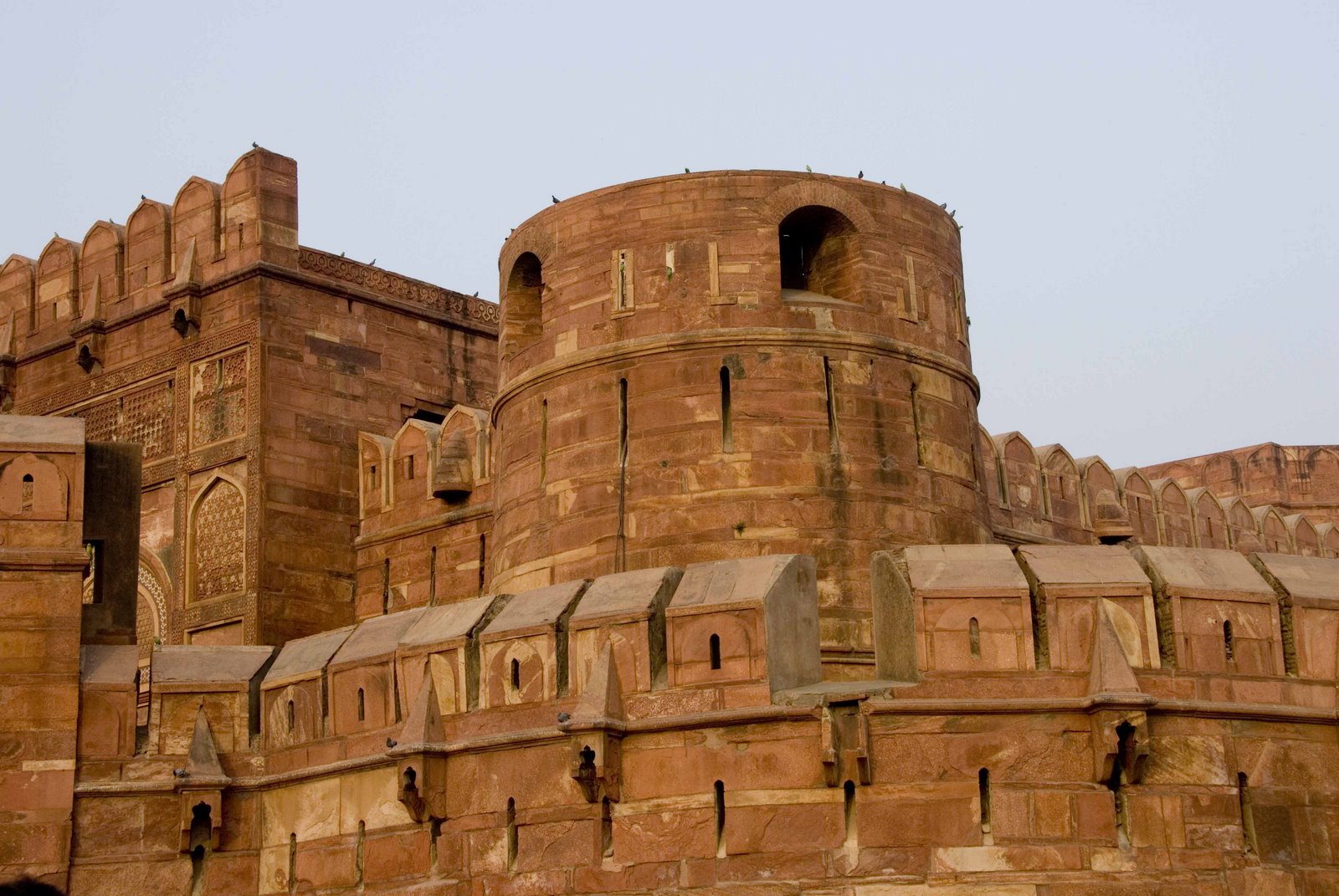
A greater part of the fort at Agra was constructed by Akbar starting in 1565 AD and completed it in 1574 A.D. Situated on the bank of the river Jamuna, it is a massive and grand structure. The special feature of this fort is the 2.5 kms. long and 21 metres high circuitous wall of solid red sand stone. The stones are linked with iron rings so close that not even a hair can pass through. The entrance to the fort is through two gateways. The main entrance known as Delhi Gate was the ceremonial entrance to the fort. The other smaller gateway is called the Hathi Pol or Elephant Gate because of the two huge elephants on either side of the gate and was meant for private use.

The Delhi Gate entrance archway is flanked by two double storeyed octagonal bastions crowned by octagonal domed kiosks. A balcony separates the two storeys. The structure above the balcony has arched recesses. The gateway is decorated with beautiful panels of coloured tiles and marble inlay work.
The fort is surrounded by a deep moat. The fort formerly contained numerous buildings of red sand stone but these were later demolished in the reign of Shah Jehan who constructed marble pavilions instead. Some of the important buildings inside the fort are the Jahangiri Mahal built for Jahangir and his family, the Moti Masjid, and Mena Bazaars. The Jehangiri Mahal is an impressive structure and has a courtyard surrounded by double-storeyed halls and rooms. The corbel brackets, doorways and the chajja above them are profusely carved.
The elaborate architecture of the brackets seems to be an imitation of wood work. The planning and construction of the fort show that Rajput architectural styles were freely adopted.


No comments:
Post a Comment